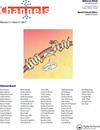A Four-Legged Megalosaurus and Swimming Brontosaurs
IF 3.2
3区 生物学
Q2 BIOCHEMISTRY & MOLECULAR BIOLOGY
引用次数: 1
Abstract
Thomas Kuhn in his famous work The Structure of Scientific Revolutions laid out the framework for his theory of how science changes. At the advent of dinosaur paleontology fossil hunters like Gideon Mantell discovered some of the first dinosaurs like Iguanodon and Megalosaurus. Through new disciples like Georges Cuvier’s comparative anatomy lead early dinosaur paleontologist to reconstruct them like giant reptiles of absurd proportions. This lead to the formation of a new paradigm that prehistoric animals like dinosaurs existed and eventually went extinct. The first reconstructions of dinosaur made them to look like giant counterparts of their modern cousins. Then in 1841, Richard Owen coined the term dinosaur, and put the newly discovered dinosaurs into a special group based on similar morphological characteristics. He reconstructed them to look like giant elephant like reptiles. They were slow, sluggish, and their tales dragged the ground. Then in 1858, William Foulke and Joseph Leidy discovered the dinosaur Hadrosaurus which had morphological characteristics that hindered the animal from being quadrupedal. As a result a new paradigm was formed and some dinosaurs were lifted off the ground. They were reconstructed to look like giant reptilian kangaroos in stance, but they were still considered slow, sluggish, with tails still dragging behind them. This paradigm persisted until the 1960’s when paleontologist John Ostrom realized that there was an anomaly within dinosaur paleontology. The environments that dinosaurs inhabited did not match with the reconstructions of swamp dwelling animals, and dinosaur anatomy also did not match those reconstructions. Ostrom’s discovery and description of Deinonychus with its very bird like skeleton lead him to conclude that dinosaurs were energetic, and probably endothermic. This resulted in a crisis which lead other paleontologist to research this anomaly. More discoveries proved Ostrom’s new paradigm and dinosaur paleontology underwent a scientific revolution from the 1960’s to the 1980’s. Formally termed the dinosaur renaissance this revolution lead to dinosaurs being reconstructed as active, intelligent animals no longer with their tails dragging behind them.四足巨龙和会游泳的雷龙
托马斯·库恩在他著名的著作《科学革命的结构》中为他的科学如何变化的理论奠定了框架。在恐龙古生物学出现时,像吉迪恩·曼特尔这样的化石猎人发现了一些最早的恐龙,比如禽龙和巨龙。通过像乔治·居维叶的比较解剖学这样的新信徒,早期的恐龙古生物学家把它们重建成荒诞比例的巨型爬行动物。这导致了一种新的范式的形成,即恐龙等史前动物存在并最终灭绝。对恐龙的第一次重建使它们看起来像它们现代表亲的巨大复制品。1841年,理查德·欧文创造了“恐龙”一词,并根据相似的形态特征将新发现的恐龙归入一个特殊的类群。他把它们重建成像大象一样的爬行动物。他们行动迟缓,步履蹒跚,他们的故事拖着地面。然后在1858年,威廉·福尔克和约瑟夫·莱迪发现了鸭嘴龙,这种恐龙的形态特征阻碍了它成为四足动物。结果形成了一个新的范式,一些恐龙被抬离了地面。它们被重建成站立时像巨型爬行类袋鼠的样子,但它们仍然被认为是缓慢、迟缓的,尾巴仍然拖在身后。这种模式一直持续到20世纪60年代,直到古生物学家约翰·奥斯特罗姆意识到恐龙古生物学中存在一种异常现象。恐龙居住的环境与重建的沼泽动物不匹配,恐龙的解剖结构也与这些重建的恐龙不匹配。奥斯特罗姆对恐爪龙的发现和描述,以及它非常像鸟的骨骼,使他得出这样的结论:恐龙是精力充沛的,而且可能是吸热的。这导致了一场危机,导致其他古生物学家开始研究这种异常现象。更多的发现证实了奥斯特罗姆的新范式,从20世纪60年代到80年代,恐龙古生物学经历了一场科学革命。这场革命被正式称为恐龙复兴,它使恐龙被改造成活跃、聪明的动物,不再拖着尾巴。
本文章由计算机程序翻译,如有差异,请以英文原文为准。
求助全文
约1分钟内获得全文
求助全文
来源期刊

Channels
生物-生化与分子生物学
CiteScore
5.90
自引率
0.00%
发文量
21
审稿时长
6-12 weeks
期刊介绍:
Channels is an open access journal for all aspects of ion channel research. The journal publishes high quality papers that shed new light on ion channel and ion transporter/exchanger function, structure, biophysics, pharmacology, and regulation in health and disease.
Channels welcomes interdisciplinary approaches that address ion channel physiology in areas such as neuroscience, cardiovascular sciences, cancer research, endocrinology, and gastroenterology. Our aim is to foster communication among the ion channel and transporter communities and facilitate the advancement of the field.
 求助内容:
求助内容: 应助结果提醒方式:
应助结果提醒方式:


